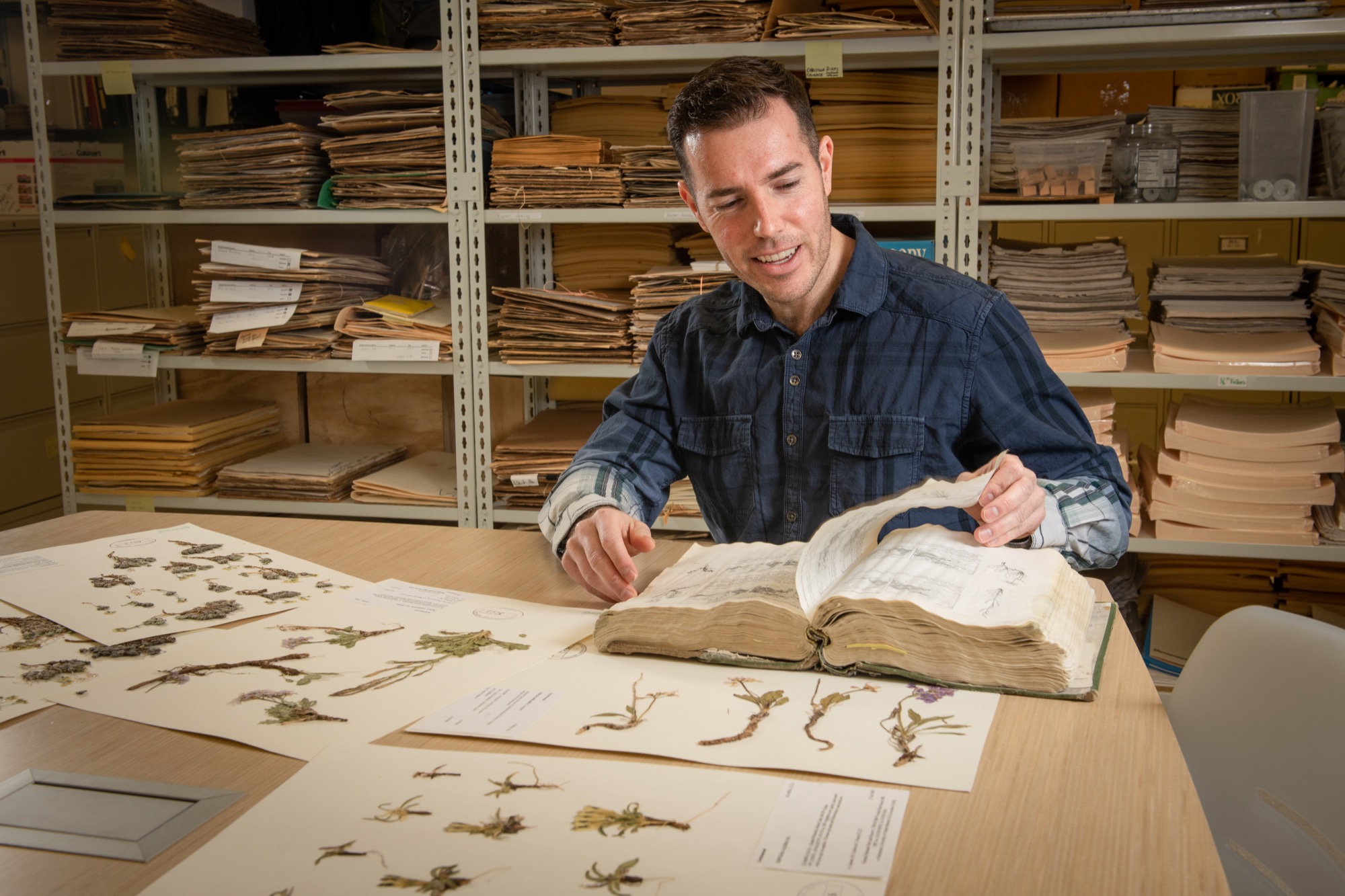Shedding light and building hope
by cmmyers |
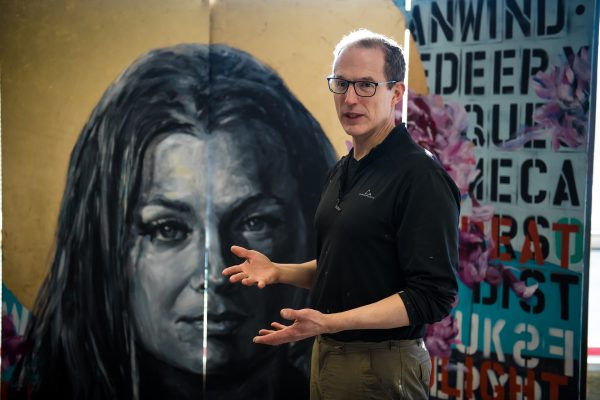
Steven Gordon, adjunct professor of art, discusses a work completed by students as part of his ACEs -Adverse Childhood Experiences - mural project in UAA's Fine Arts Building. (Photo by James Evans/ University of Alaska Anchorage)
Steve Gordon, adjunct professor of art in UAA's Department of Art and renowned local artist, explores the correlation of Adverse Childhood Experiences (ACEs) and addiction in a series of seven murals called the ACEs Mural Project. The project was a deeper dive into the root causes of addiction that Gordon became aware of after doing a series of murals on the opioid crisis. "Included in every backstories of all the folks who were featured in the Opioid Mural series were stories of childhood trauma and toxic stress," said Gordon, "and I was interested in exploring that connection in this series."
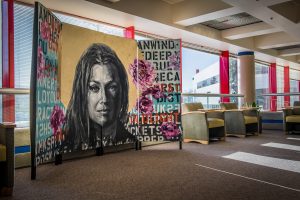
The Resilience After Trauma ACEs mural project will be on display through UAA's campus March 11-31 before moving on to public exhibits across the state. (Photo by James Evans / University of Alaska Anchorage)
"I believe that art has the power to inspire change because fundamentally art is concerned with the things which move the human heart. When artists listen to the heart-wrenching stories of childhood trauma and addiction, hearts are moved. When artists listen to lives transformed and empowered, hearts are moved. When a person shares their life story, a connection is made and that is what inspired the artists to create the murals. Everybody who listened to these peoples' stories is impacted," said Gordon of his students who worked on the project.
The ACEs Mural Project was funded by grants from Alaska Children's Trust and Alaska Native Medical Center Auxiliary. The murals will be on display across UAA's campus March 11-31, before touring various public locations throughout the state.
Childhood trauma
In recent years, researchers have discovered an undeniable link between trauma and the stress it causes on a growing child's brain, altering the course of its healthy development. The consequences of these traumas can include a range of negative experiences, from the death of a parent or physical, emotional and sexual abuse, to living with a mentally ill or drug addicted parent. These experiences exponentially increase the risk of the child having issues lasting well past their youth and adolescence and into adulthood.
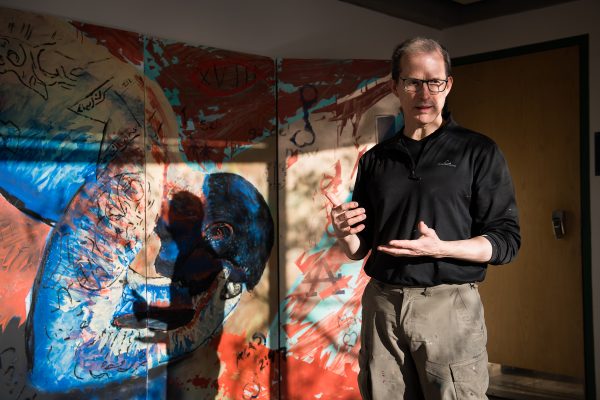
Steven Gordon stands in front of one of the student's murals, showcasing the large scale of the pieces. (Photo by James Evans / University of Alaska Anchorage)
People who've had numerous ACE events are at a dramatically higher risk for suicide, substance abuse, heart disease, cancer, asthma, depression, mental health disorders, addiction, intimate partner violence, homelessness or a shorter life expectancy than their other adult peers.
Gordon said in light of the growing opioid epidemic sweeping the nation, and Alaska's communities currently feeling the ripple effects of this national crisis, it is important to him that the public see these adults suffering from addiction and homelessness as human, who have made mistakes, but also have the capacity to heal and move forward.
Scaling for impact
Gordon truly believes that art has the power to deeply move people, and the larger than life scale of the seven murals were designed to be unavoidable pieces that serve as a catalyst for conversation as how Alaskans talk about and work toward helping those overcome addiction and trauma.
Everything placed within the murals has meaning, from the colors used, the spray-painted words and symbols, to the references of nature. In each mural, these different pieces represent the story of one person's journey of experiencing trauma, their fight to overcome adversity and their path toward healing.
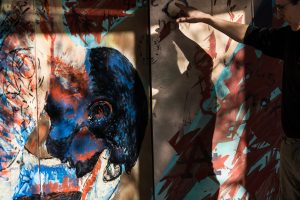
In this mural, one of the subjects featured in the project said after being incarcerated, he found God and was literally brought to his knees. (Photo by James Evans / University of Alaska Anchorage)
"The students really had to listen intensely and intently, and then dive off the high board," said Gordon. He knows it's a challenging project, but is really proud of the collaboration and stunning murals his students created. "They didn't always know what they were going to end up with, but they didn't have a lot of time to hem and haw, they just had to start."
Which in a way, the fear of the unknown and just jumping off was similar for both Gordon's students and those they were featuring in the murals. It takes courage to tell one's traumatic story and to also interpret that story through art. But that was the lesson - not only for his students, but for the public - to listen and not look away when faced with a difficult and uncomfortable problem.
"Until you get to the root of the root and help children build resilience to trauma, we will still have this problem," Gordon said.
Written by Catalina Myers, UAA Office of University Advancement
 "Shedding light and building hope" is licensed under a Creative Commons Attribution-NonCommercial 4.0 International License.
"Shedding light and building hope" is licensed under a Creative Commons Attribution-NonCommercial 4.0 International License.










